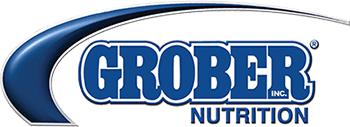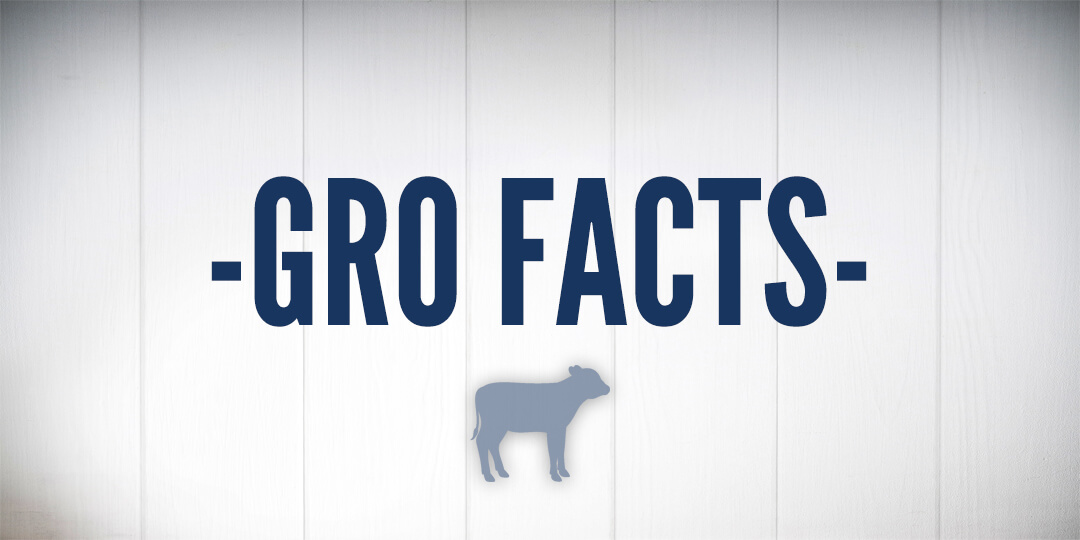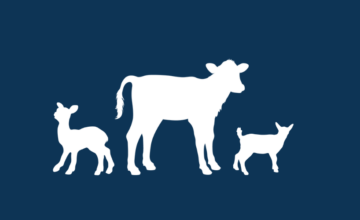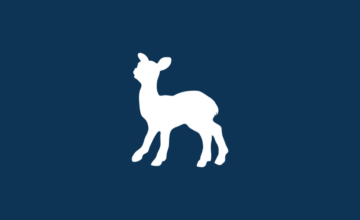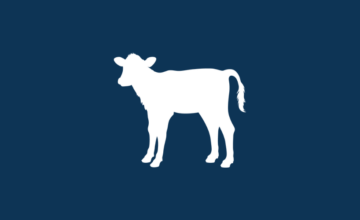Optimizing Your Calf Feeding Program
- Nov 02, 2010
- By Grober Nutrition
- In Canada, USA
The terms accelerated and enhanced have been used over the past 15 years to describe an increased plane of nutrition in calves. However, calves require that increased nutrition in order to optimize growth. Moreover, production objectives such as:
- decreasing age at first breeding,
- improving health status,
- and ultimately building a more efficient and productive dairy cow is now an expected outcome of a calf nutrition program.
The basis of the calf growth model
The calf’s digestive system is immature and requires milk or milk replacer as the primary source of nutrition. The first two months of calf growth are the greatest opportunity to optimize early growth. There has been some evidence showing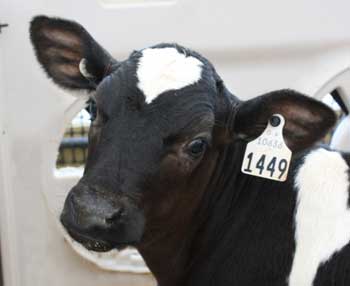 a positive relationship between accelerated feeding programs and first lactation milk output (2,3,5). VanAmburgh’s research team (Cornell University) were able to determine that for every 1lb of average daily gain prior to weaning, heifers produced approximately 1,000lbs more milk throughout first lactation (6). The implications are clear that proper nutrition right from the start will have long-lasting economic benefits. Energy intake is the main driver of bodyweight gain (BWG) however protein intake can influence both BWG and body composition. Protein can be utilized efficiently during the first two months, especially when protein comes from highly digestible milk products. While early nutrition is very important, over-conditioning (particularly between 3-15 months) can have detrimental effects on mammary gland development and thus future milk production. Feeding for higher gains in the milk phase (< 3 months; ≥ 900 g/d) may prevent heifers from over-conditioning. Furthermore, gains >840g/day (between 12 and 65 days of age) have yielded a higher proportion of cows finishing 1st lactation compared to calves gaining ≤741g/day (1). The balance of nutrients provided in the milk phase is critical (Figure 1). Providing extra calories primarily through fat can lead to fat deposition. Energy from protein enables skeletal and muscular development while enhancing other cellular functions including the immune system. The milk phase offers the best opportunity for setting your heifer up for optimal growth and future production. A milk replacer balanced correctly for protein and fat is a farmer’s best tool for producing optimal heifers.
a positive relationship between accelerated feeding programs and first lactation milk output (2,3,5). VanAmburgh’s research team (Cornell University) were able to determine that for every 1lb of average daily gain prior to weaning, heifers produced approximately 1,000lbs more milk throughout first lactation (6). The implications are clear that proper nutrition right from the start will have long-lasting economic benefits. Energy intake is the main driver of bodyweight gain (BWG) however protein intake can influence both BWG and body composition. Protein can be utilized efficiently during the first two months, especially when protein comes from highly digestible milk products. While early nutrition is very important, over-conditioning (particularly between 3-15 months) can have detrimental effects on mammary gland development and thus future milk production. Feeding for higher gains in the milk phase (< 3 months; ≥ 900 g/d) may prevent heifers from over-conditioning. Furthermore, gains >840g/day (between 12 and 65 days of age) have yielded a higher proportion of cows finishing 1st lactation compared to calves gaining ≤741g/day (1). The balance of nutrients provided in the milk phase is critical (Figure 1). Providing extra calories primarily through fat can lead to fat deposition. Energy from protein enables skeletal and muscular development while enhancing other cellular functions including the immune system. The milk phase offers the best opportunity for setting your heifer up for optimal growth and future production. A milk replacer balanced correctly for protein and fat is a farmer’s best tool for producing optimal heifers. 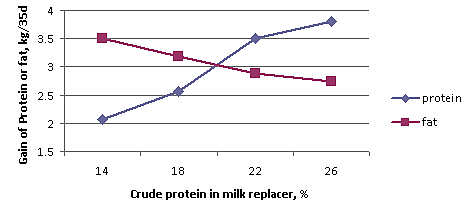
Figure 1 Calf partitioning of fat and protein in the body based on the level of crude protein in the milk replacer (4).
Grober Young Animal Development Centre Experience
The Grober Young Animal Development Centre in Woodstock, Ontario, examined the outcome of feeding 6 litres/day vs 9 L/d of a higher protein milk replacer (Grober Excel 26% protein, 18% fat). Milk replacer was mixed at a rate of 150g/L. Calves fed 9 litres/day had significantly greater gains from week 2 to week 6 (Figure 2, p>0.05). These higher body weights were attained even though calves drinking 6 L/day consumed more calf starter (Table 1). During the weaning phase (week 6-8) grain intakes in the higher milk group (9L/d) increased rapidly; calves fed 6 L/d continued to consume more grain. However, this increased grain intake did not result in greater body weight gains. Calves in the 9L/d group continued to outperform post weaning (Figure 2). 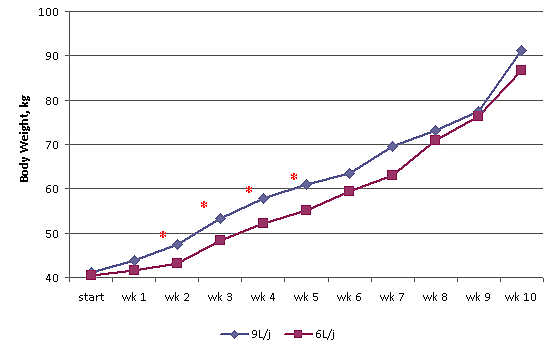 Figure 2 Body weight comparison between calves fed higher protein milk replacer at* 6L/day and 9L/day. Table 1 Calf starter intake (kg/day) of calves fed 6L/day of high protein milk replacer compared to calves fed 9L/day of high protein milk replacer. (a,b columns with different superscripts are significantly different at p<0.05; weeks 1-3 all calves consumed <150g/day.)
Figure 2 Body weight comparison between calves fed higher protein milk replacer at* 6L/day and 9L/day. Table 1 Calf starter intake (kg/day) of calves fed 6L/day of high protein milk replacer compared to calves fed 9L/day of high protein milk replacer. (a,b columns with different superscripts are significantly different at p<0.05; weeks 1-3 all calves consumed <150g/day.)
| Week 4 | Week 5 | Week 6 | Week 7 | Week 8 | Week 9 | Week 10 | |
| 9L/day n=38 | 0.111a | 0.180a | 0.118a | 0.527a | 0.910a | 1.60a | 2.20a |
| 6L/day n=40 | 0.174b | 0.255a | 0.360b | 0.769b | 1.30b | 1.80b | 2.40b |
What it means to the producer
In raising heifers, the largest cost inputs are feed and days of growth needed to achieve productive status. Optimum heifer growth is a function of the time to reach first calving with the correct bodyweight, height, age and development to express full lactation potential. Maximizing the potential production and minimizing days to first calving can help in overall farm economics. When applying a tool developed by the University of Wisconsin, considerable cost benefit can be shown when feeding an optimal program and calving at 22.8 months. Table 2 The cost benefits per calf of an optimal feeding program, using typical figures.
| Feeding program | Conventional | Optimal |
| Birth weight (kg) | 43 | 43 |
| Weaning age (days) | 56 | 56 |
| Weaning weight (kg) | 68 | 96 |
| MR intake (kg/d) | 0.54 | 1.0 |
| Calf starter intake (kg/d) | 0.6 | 0.36 |
| Calving age (days) | 730 (24mth) | 697( 22.8mth) |
| *Cost benefit at weaning $/calf | 58.11 |
Using University of Wisconsin – management tool http://www.uwex.edu/ces/dairymgt/tools/index.html *Milk replacer costs for the conventional and optimal programs are based on Grober Excel and calf starter 22%, May 2010.
Summary – Benefits and Opportunities of Optimal Feeding Programs
Cost benefit at weaning
- Improved growth rate – calves on optimal milk replacer programs have higher weight gain. This improved growth continues beyond weaning.
- Improved health – strong, well nourished calves have an enhanced immune system and improved response to disease challenge.
Cost benefit at calving
- Reduced heifer replacement costs – decreased time to breeding and first calving
- Improved milk production ability – High early gains (pre-3 months) allows for energy at a time when growth and development of the mammary glands are not adversely affected.
Grober Nutrition
Recent Posts
Tags
Archives
- October 2024
- July 2024
- May 2024
- April 2024
- January 2024
- December 2023
- October 2023
- September 2023
- August 2023
- June 2023
- December 2022
- November 2022
- October 2022
- August 2022
- July 2022
- June 2022
- May 2022
- April 2022
- March 2022
- February 2022
- January 2022
- August 2021
- February 2021
- September 2020
- June 2020
- April 2020
- May 2017
- April 2017
- October 2016
- September 2016
- August 2016
- March 2016
- March 2015
- January 2015
- December 2014
- December 2013
- September 2013
- May 2013
- January 2013
- December 2012
- November 2012
- March 2012
- March 2011
- February 2011
- November 2010
- August 2010
- December 2009
- November 2009
- March 2009

